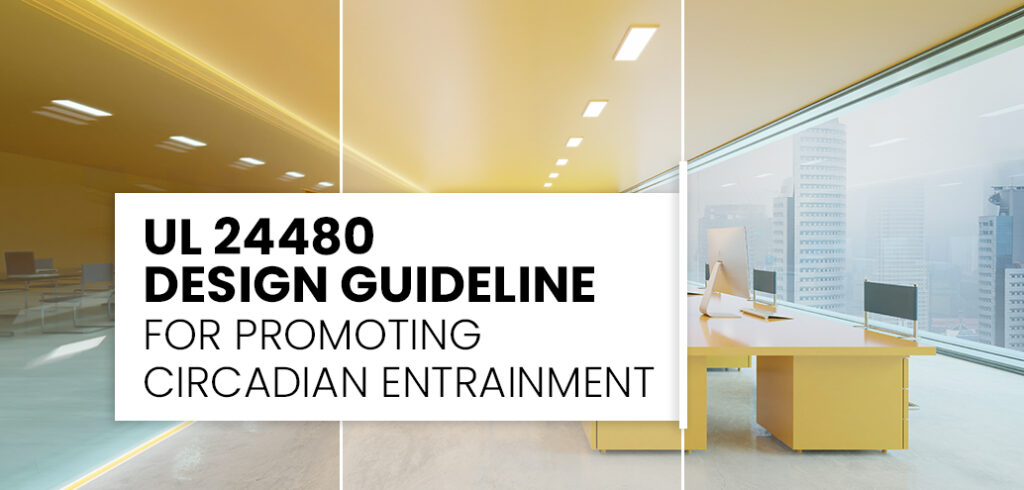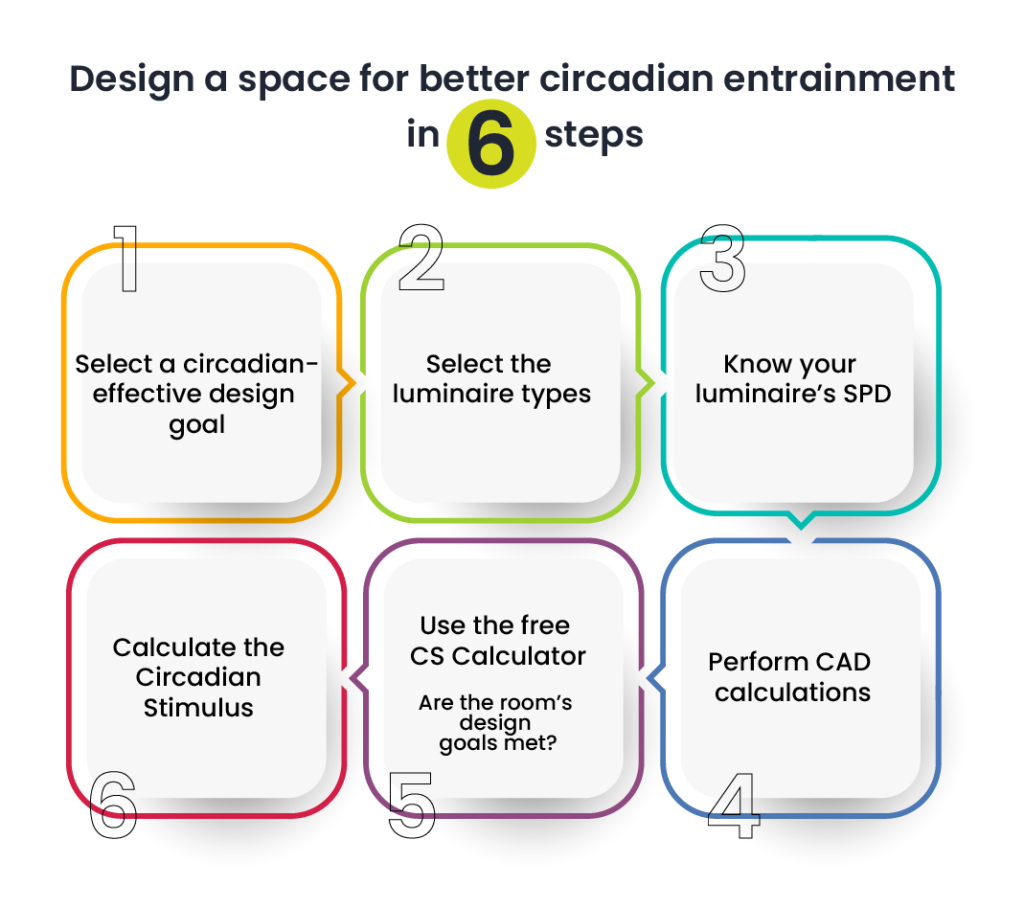The Lighting Design Guideline for Circadian Entrainment released by UL

Have you ever considered how light affects our well-being? Our bodies have an internal clock called the circadian rhythm, which controls various processes in our body and influences our sleep patterns. It’s crucial for us to align our circadian rhythm with the natural cycles of daylight to maintain optimal health and productivity. That’s where UL 24480 comes in. It’s a design guideline specifically created to promote circadian entertainment through lighting design. In this blog, we’ll explore the details of UL 24480 and understand its significance in creating spaces that support our natural biological rhythms.
Understanding Circadian Entrainment
Before we explore UL 24480, let’s understand the concept of circadian entertainment. Circadian entrainment refers to the process of synchronizing our internal biological clock with external environmental cues, primarily the light-dark cycle. By aligning our circadian rhythm with natural daylight patterns, we can experience improved sleep quality, enhanced cognitive performance, and better overall well-being.
DG 24480 is a significant development in the field of lighting design as it brings forth design guidelines centered around the Circadian Stimulus (CS) method.
These guidelines are aimed at helping lighting specifiers, manufacturers, electrical contractors, and building owners comprehend the importance of implementing appropriate lighting solutions.
By adhering to these guidelines, lighting designers and building owners can create healthier spaces that have a positive impact on our well-being, communities, and businesses. Such spaces are known to attract businesses to properties and employees to businesses, as they are widely recognized as being beneficial for everyone involved.
Six Steps for Lighting Designers using the circadian stimulus method
UL 24480, the Design Guideline for Promoting Circadian Entrainment, provides a clear framework for designing lighting systems that support circadian rhythms. The guideline outlines six steps that should be followed:
Design a space for better circadian entrainment in six steps

- Set a circadian-effective lighting design goal: The aim is to achieve a Circadian Stimulus (CS) of 0.3, which is explained further in the Design Guideline.
- Choose the appropriate luminaire type: Select a luminaire that offers the desired horizontal distribution of light. A higher vertical to horizontal ratio will result in a higher CS.
- Select the appropriate light source Spectral Power Distribution (SPD): Consider the amount of illumination provided across the visible light spectrum.
- Utilize CAD software to measure the light delivered in the occupant’s eye plane.
- Calculate the Circadian Stimulus (CS) using the provided calculator.
- Ensure that the CS value is equal to or greater than 0.3. If it falls short, explore alternative luminaires or incorporate additional local lighting near the work station.
By following these steps, designers can create lighting systems that promote circadian entrainment, supporting the natural biological rhythms of individuals.
UL hopes to achieve several positive outcomes through the publication of UL 24480, the Design Guideline for Promoting Circadian Entrainment. These guidelines aim to create awareness and understanding among various stakeholders, leading to the following opportunities:
- Property owners: By implementing these design guidelines, property owners can differentiate their properties by offering healthier indoor spaces. This can increase property values and significantly improve the lives of building occupants.
- Lighting specifiers: The publication provides an opportunity for lighting specifiers to have a more profound impact on the well-being of the end-users. They can design spaces that align with circadian rhythms, thereby positively influencing occupants’ health. This can also open doors for career advancement in meaningful ways.
- Electrical contractors: The guideline presents an opportunity for electrical contractors to establish closer partnerships with lighting specifiers and property owners. They can ensure that the lighting designs are correctly implemented, thereby contributing to the success of circadian-friendly lighting projects. This collaboration can also lead to business growth.
- Building occupants: By following the design guidelines, occupants can experience several benefits. They will enjoy increased alertness, reduced reliance on stimulants, improved sleep quality, and overall enhancements in their health and well-being.
Overall, UL 24480 aims to foster a deeper understanding of circadian entrainment and its impact on indoor spaces. It seeks to bring together stakeholders and create opportunities for healthier environments, improved property values, professional growth, and enhanced occupant experiences.
In summary
UL 24480 is a useful resource, providing baseline performance goals for indoor lighting to promote visual quality and circadian entrainment. As the demand for human-centric lighting continues to grow, UL Solutions remains at the forefront, providing comprehensive solutions and services that contribute to advancing lighting technologies focused on human well-being.In summary, human-centric lighting is gaining prominence in the marketplace, and UL Solutions is at the forefront of this movement, offering innovative measurement and performance services. By integrating scientific insights and industry standards, they are paving the way for healthier lighting environments that enhance our well-being and productivity.